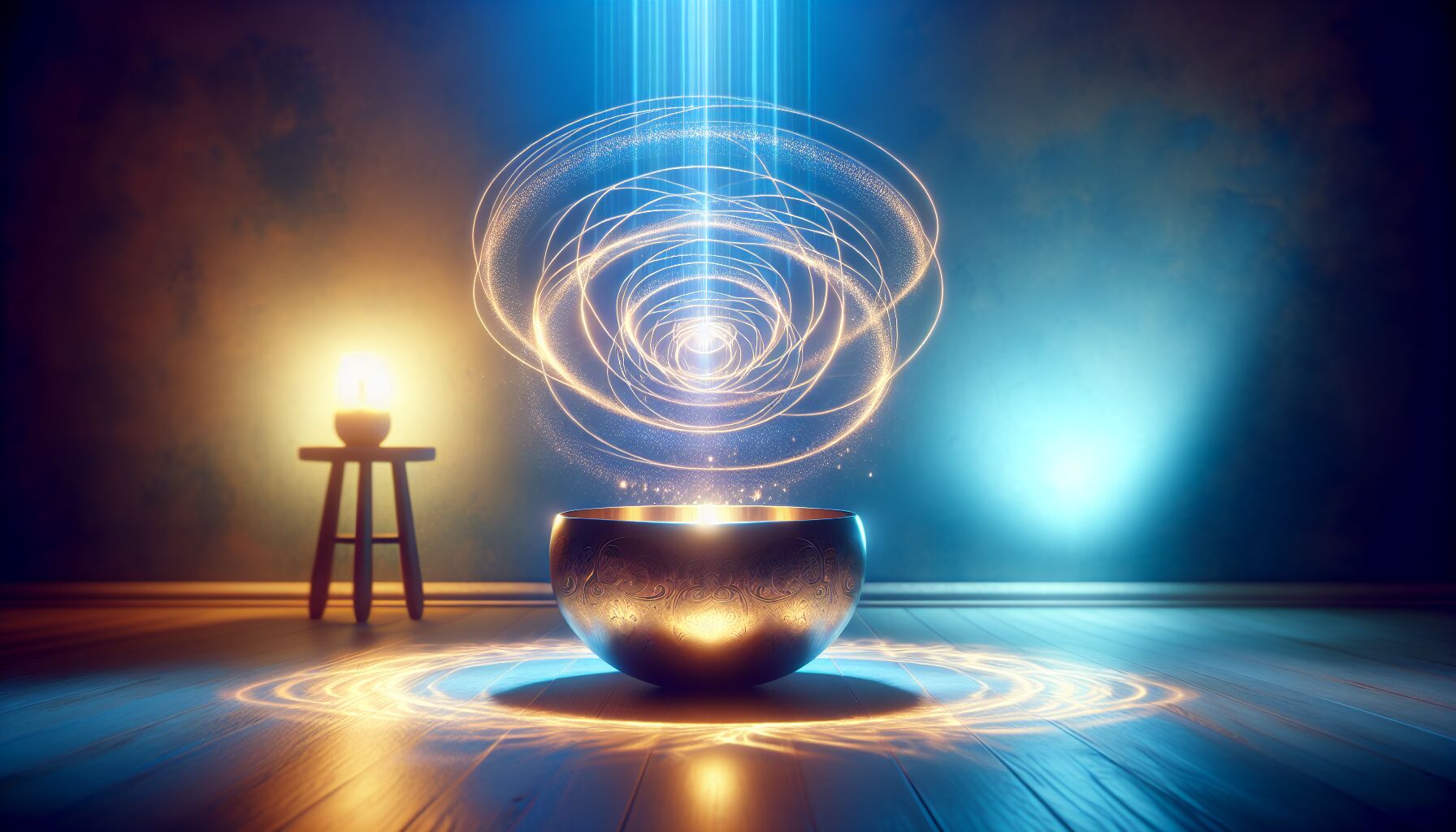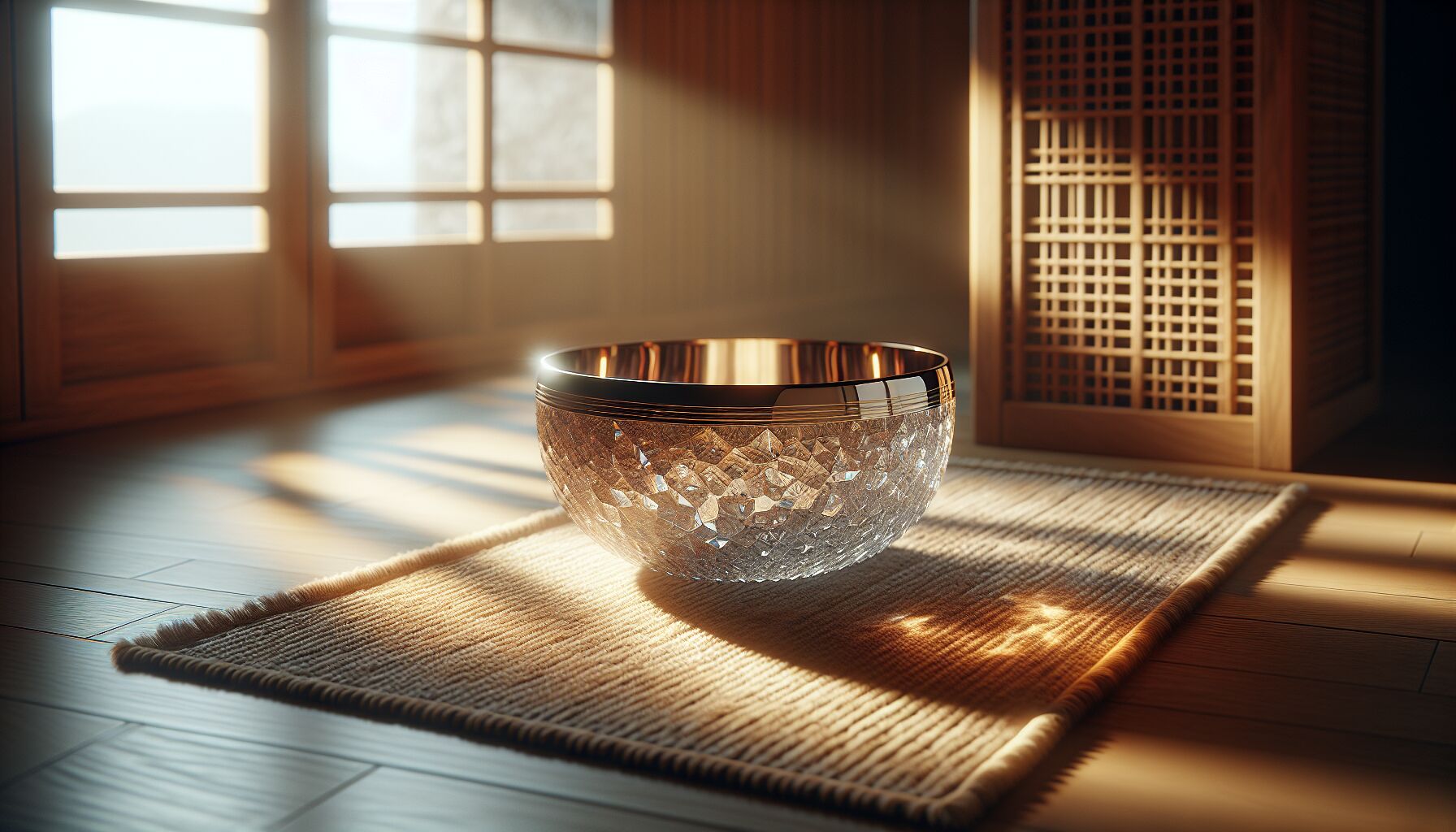 What if the medicine you need isn’t a pill but a pitch?
What if the medicine you need isn’t a pill but a pitch?
Sound frequency does more than tickle the eardrum — it weaves through your bones, your cells, your emotional edges. And when it’s intentional, when it’s tuned just so, it can shift more than your mood. It can reset patterns trapped deep in your nervous system. That’s not some abstract idea — it’s grounded in neuroscience, energy medicine, traditional healing, and physics alike.
Let me explain. Everything you are — your breath, your heartbeat, the theta waves drifting through your pre-sleep thoughts — operates on rhythm. Your body is basically a living drum set. Internal cycles, oscillations, entrainment patterns. So when we introduce frequencies into that system — especially those that mimic healthy, coherent patterns — the body tends to listen. Literally.
Think of how your foot taps when a good song comes on. That’s entrainment. But on a deeper level, frequencies can entrain your heart rate, your alpha wave production, even your digestion. And no, that’s not woo. Studies from the National Center for Biotechnology Information (NCBI) show that certain auditory frequencies — like 528 Hz or 432 Hz — can lower cortisol, reduce inflammation markers, and support autonomic balance. What that translates to in plain talk is: less fight-or-flight, more rest-and-repair.
But it’s not only about calming down. Some frequencies stimulate alertness and creativity. Others can guide your brain into meditative or lucid dream-like states — without pushing. Just nudging gently, like wind shaping dunes. The connection between sound and the vagus nerve is especially relevant here. The vagus is your wandering nerve — running from brain to gut — and it’s crucial for regulating stress, immune signaling, even emotional resilience. Certain vibrational tones or hums (think of chanting or using a tuning fork at 128 Hz) help stimulate vagal tone, putting your parasympathetic nervous system back in the driver’s seat.
Ultrasound therapy has already made its way into mainstream rehab clinics — used there for deep tissue recovery. That’s a subtle form of vibrational healing too, whether they call it that or not. And indigenous cultures knew this long before the studies. From didgeridoos to Icaros to temple gongs, they used sound to clear spiritual imbalance, release grief, mark transitions, or induce trance. These weren’t just rituals — they were practical tools for survival, self-regulation, and connection.
“If you want to find the secrets of the universe, think in terms of energy, frequency and vibration.” – Nikola Tesla
Conventional science is catching up, but the core of it remains simple: your body is an orchestra. And illness, fatigue, even emotional burnout feel like dissonance in that orchestra — like the strings are out of tune. Sound frequency, when thoughtfully chosen and applied, helps retune what’s been stressed, stuck, or forgotten.
It’s also worth noting that not all frequencies soothe. And that’s part of the point. Some “noise” — like industrial HVAC hums around 60 Hz or poorly mixed digital audio — creates physiological stress. They fatigue your auditory nervous system or cause subtle muscular tension. That’s why carving out intentional quiet, or using nature-based frequencies (like bird calls, running water, or wind through trees), can serve as passive vibrational healing, especially during periods of sensory overload.
Now, does this mean playing a crystal bowl will immediately clear years of trauma? No. It’s not that convenient — or that simplistic. But used as part of a rhythm — a gentle repetition — frequencies offer something profound. Not loud, theatrical healing. But subtle realignment. One tone at a time. This is where sound links neatly with the larger field of energy medicine. Rather than treating parts in isolation, you’re tuning the whole field. You’re addressing not just what hurts but how it’s resonating.
And that’s the difference between symptom management and true relaxation — not just the spa-type, but the kind that allows your body to unfold. There’s a softness that follows. A kind of remembering.
Isn’t that what we’re ultimately after? Something that lets us feel like ourselves again — only kinder, quieter, steadier?
So the next time you feel discord in your body or your thoughts, consider adjusting the input. Just a hum, a drone, or even a bowl gently circling clockwise. Sounds simple, because it is. That’s the power of real medicine. It whispers.
Popular sound healing techniques and tools
You don’t need a recording studio or a guru with a gong to start working with sound. In fact, most sound healing techniques began as homegrown practices—ancestral traditions rooted in the land, in breath, and in the body’s natural rhythms. Over time, they’ve evolved, yes—but their essence is still accessible, still practical. And they’re a key part of how vibrational healing can be used as a daily tool, not just an esoteric experience.
Let’s walk through a few of the most respected tools and routes—some old, some new, all capable of tuning the body back toward coherence.
- Tuning forks
The quiet overachievers of the sound therapy world. These calibrated metal instruments produce pure, specific frequencies when struck, which can be directed toward the body or an energy field for therapeutic effect. A fork tuned to 528 Hz, for example, is often used for supporting cellular repair—roots in the Solfeggio scale, which links back to Gregorian chants. More modern biofield research also supports their use in modulating nervous system function and increasing vagal tone.
You don’t need complex knowledge to begin here. Find a set with 128 Hz (excellent for muscle relaxation) and 528 Hz (often called the “love” frequency). Place the stem on your sternum, spine, or wherever tension likes to linger, and breathe. That’s it. The tone does the heavy lifting.
- Crystal singing bowls
They’ve become something of an icon—and while occasionally treated as decorative items, their effectiveness is rooted in straightforward vibrational physics. Made from quartz or crystal mixed with precious minerals, these bowls resonate with pitch-perfect frequency when played. Quartz is piezoelectric, which means it can store and emit energy, and when combined with sound waves, it creates a potent form of energy medicine.
Each bowl is typically tuned to a note corresponding to a chakra or energy center—C for the root, G for the throat, and so on. Some people experience a deep trance-like peace within minutes; others report memories surfacing or emotions unwinding mid-session. That’s the thing—sound reaches what words can’t pry open.
Let the bowl ring across the room first, then play it close to your heart space or around the back of your neck—the physical interface between mind and intuition.
- Voice and mantra
No tools needed for perhaps the most ancient and intimate technique—your own voice. Even humming activates the vagus nerve. Chanting certain syllables (like “OM” or “AH”) adds resonance throughout body cavities, subtly massaging tissue and fascia with vibration. Some traditions call this bhakti (devotional) practice, others see it as toning. Either way, it works.
There’s something potent in reclaiming your voice—not just metaphorically, but biologically. A daily hum after breathwork, or a few verses of a favorite mantra while washing dishes, can cultivate a quieter nervous system. Over time, it unglues hardened thought patterns. As psychologist Carl Rogers once said,
“The curious paradox is that when I accept myself just as I am, then I can change.”
There’s something about tonal repetition that invites that acceptance—layered, wordless, working beneath the veil of conscious control.
- Drums and rhythmic percussion
Before melody, there was rhythm. Frame drums, buffalo drums, Djembe—across cultures, drumming has been used to shift mental states, call the spirit back, release grief. The steady cadence of a 4-beat rhythm has been studied in clinical trials for its effects on trance induction and EEG brain synchronization. In simpler terms: it quiets mental chaos.
You don’t need a ceremonial space. Rhythm can happen in the garage, near the firepit, or alone in the kitchen tapping wooden spoons. It’s the beat that matters. It signals to your autonomic system that there’s structure, safety. And within structure, we exhale. We soften. Real relaxation starts there.
- Nature
Creating a personal sound healing practice
 No need for a wellness retreat or high-end gear. Building a personal sound healing practice starts right where you are — with body, breath, and intention. The focus here isn’t performance; it’s rhythm. And rhythm, once established, becomes a doorway. This kind of medicine doesn’t announce itself with grand claims. It’s quiet, consistent, deeply rooted. Kind of like tending a garden. You don’t just water it once.
No need for a wellness retreat or high-end gear. Building a personal sound healing practice starts right where you are — with body, breath, and intention. The focus here isn’t performance; it’s rhythm. And rhythm, once established, becomes a doorway. This kind of medicine doesn’t announce itself with grand claims. It’s quiet, consistent, deeply rooted. Kind of like tending a garden. You don’t just water it once.Start simple. A tuning fork, your voice, your favorite drone track on low volume — any of these can form the base layer. The key is repetition. Not robotic repetition, but ritual. A few minutes every morning before coffee. Freighted silence before bed. Mid-afternoon when the nerves go jangly — that’s a good time too.
What works?
1. Create a sound anchor — one tone, your tone. This could be a 528 Hz tuning fork after breathwork or 30 seconds of humming before your first bite of food. The body loves predictability. Start associating specific sounds with nervous system downshifting. If you’re consistent, your brain will begin linking that sound with repair — like clicking “save” on every cell-level adjustment.
2. Pair sound with another regular practice. Pranayama, stretching, grounding barefoot — these layer beautifully with vibrational healing. If you like data, track heart rate variability (HRV) with a tool like Oura or the Elite HRV app. You may notice subtle changes over time when pairing sound work with breath or movement. That’s energy medicine in motion — no incense required.
3. Vet your environment. This one’s often missed. Intentional healing loses potency if you’re bathing in techno-smog and appliance hum. Try passive sound hygiene: turn off unused electronics, choose natural sounds over algorithmic playlists, hang cork tiles or wool tapestries on echo-prone walls. Even silence — curated, aware, genuine silence — is healing. It creates space for resonance.
And here’s something nobody tells you upfront: Your capacity to receive sound’s benefits grows with practice. At first, a bowl might just sound pretty. But over time, it will register somatically. You may feel it in your gut, your molars, the backs of your knees. That’s not imagination — it’s your awareness tuning in.
There’s also seasonal rhythm to consider. In colder months, lower frequencies like 174 Hz or deep drumming can ground scattered energy. In spring and summer, higher octave bowls or overtone singing wake up dormant creativity. This practice isn’t static. It’s a relationship. It should evolve the way your garden does — more sun here, less water there. Adjust often.
“You do not rise to the level of your goals. You fall to the level of your systems.” – James Clear
That hits different when you’re applying it to healing. If your nervous system knows that each morning it will meet a sound that coaxes rather than commands — something begins to shift. A steadier baseline. Less overreaction. More of what energy medicine calls coherence — when breath, heart, and brainwaves start humming in unison.
Don’t overthink it. A recorded sound bath from a trusted source like Wayne Perry or Shanti Sounds can be a beautiful placeholder when you’re too tired or scattered. Over time, though, try leading it yourself. Even off-key. Even with a cracked bowl or a dollar-store shaker. The frequency will meet you where you are — as long as you’re present when it arrives.
And when resistance comes up — “this isn’t working,” “I don’t feel anything today” — try seeing that, too, as a form of signal. Relaxation is rarely a straight descent. Sometimes the sound unearths a layer of stored noise that just needs to pass. That’s part of vibrational healing, too — allowing the system to speak back.
Because it’s not one-way. You’re not just playing sound at your body. That’s not the point. You’re listening. Listening to what rises as the bowl sings. To what settles when you finally stop talking, stop wanting.
This is medicine you co-create, not consume. The sound doesn’t “fix” you. It calls you back to a place where fixing isn’t even the frame — remembering is. And that remembering feels like rest. Like a full exhale. Like coming home after a long stretch of holding your breath and forgetting why you ever started running in the first place.
 DS Haven In Light Of Things
DS Haven In Light Of Things





